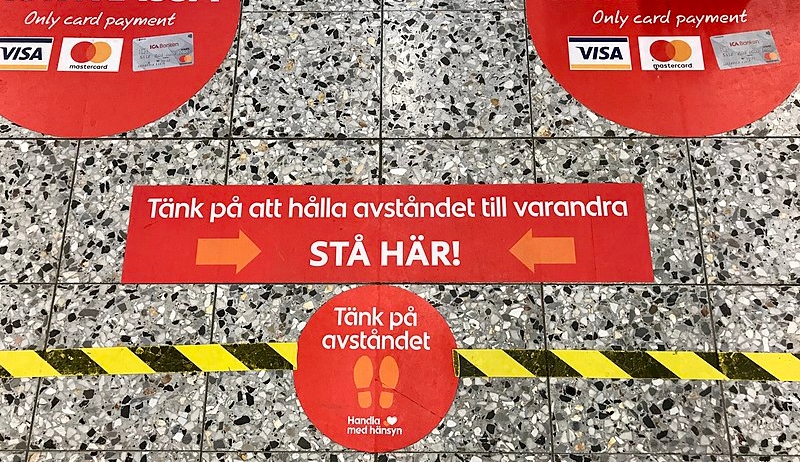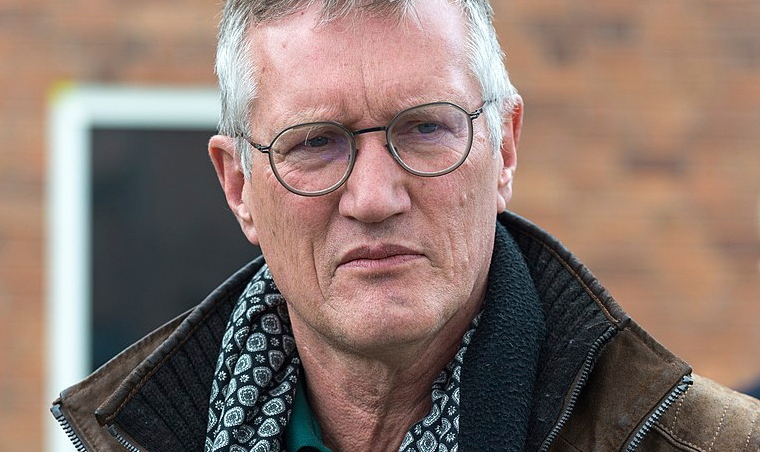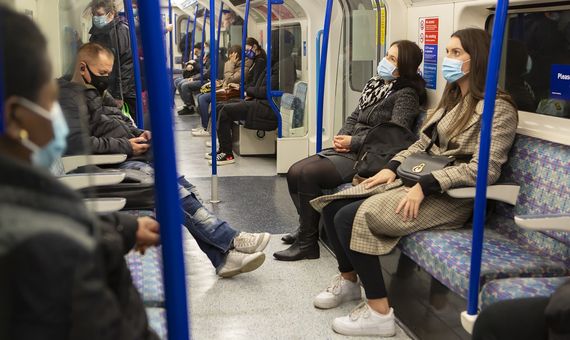This article, published in August 2020, has been updated with information added in September 2021
Although the responses of different countries to the SARS-CoV-2 pandemic have been diverse, certain measures have been generally applied. The template is summed up in a strategy that has contributed greatly to containing the virus, albeit at the cost of severely disrupting the economic and social order: lockdown. But in the cascade of empty streets and closed shops, there is one country that, like the famous Gaulish village of Asterix, has resisted and continues to resist this interference in the freedom of its citizens: Sweden. This Scandinavian nation of 10.3 million inhabitants has never imposed a lockdown, something that has been both commented on and criticised. When seen in the light of the months that have now passed, has the Swedish model failed or can anything be learned from it?
At the beginning of March, with the coronavirus spreading across the globe, extraordinary measures began to be imposed in Europe. According to a study conducted by Imperial College London (ICL) and published in Nature in June, Sweden recommended the voluntary isolation of those infected and joined other countries in advocating social distancing, with only high schools and universities being closed and public events banned at a later date. Of the 11 countries studied, it was the only one that never imposed a mandatory lockdown, keeping its borders open, as well as its bars and restaurants.

The Swedish constitution prevents the declaration of a state of emergency that restricts the free movement of citizens in times of peace. Unlike in other countries, the adoption of measures has been controlled by the experts of the Public Health Agency, which in practice has left decisions in the hands of its main epidemiologist, Anders Tegnell. He is the mastermind of the dissonant Swedish strategy based on the idea that the pandemic was a marathon and not a sprint, so the measures had to be sustainable in the long term. Tegnell’s plan did not explicitly defend the objectives of achieving herd immunity and protecting the economy, although these two ideas were surreptitiously present.
Trust and individual responsibility
While Sweden’s response to the pandemic was beginning to attract criticism in international forums, the domestic reaction was more favourable. In April, 63% of the population was confident in the country’s ability to contain the outbreak, with 73% supporting the Public Health Agency. In an interview in Nature, Tegnell justified his voluntary measures to flatten the contagion curve, based on trust and individual responsibility: “Closedown, lockdown, closing borders — nothing has a historical scientific basis, in my view,” he said. “Nowhere in Europe has been able to slow down the spread considerably.”
However, there was no lack of internal reproaches for Tegnell’s strategy. In Sweden’s leading newspaper, Dagens Nyheter, 22 scientists signed a letter censuring what they called a failure, particularly because of the high mortality rate in nursing homes, a problem acknowledged by the chief epidemiologist himself. On April 22nd, according to the genetic epidemiologist Paul Franks at the University of Lund, Sweden ranked tenth in the world in terms of deaths per 100,000 inhabitants, with 17.3, a very high rate compared to its neighbours Denmark (6.4), Norway (3.4) and Finland (2.6).

At the time, Franks predicted that if the simulations were correct, the number of infections and deaths in Stockholm —which has borne the brunt of the Swedish outbreak— should start to decline. Until effective treatments or vaccines are available, “the ultimate burden of deaths may be the same in countries who opt for lockdown as in those who adopted more liberal containment strategies,” he wrote.
Infection and mortality rates
The ICL study revealed that as of May 4 and despite Sweden’s lax approach, this Nordic country maintained a population infection rate of 3.7%, lower than those of countries that imposed strict lockdowns such as Italy (4.6%), United Kingdom (5.1%), Spain (5.5%) and Belgium (8%), and its mortality rate among those infected was in eighth place. However, while the measures taken in Italy, the United Kingdom and Spain had saved 630,000, 470,000 and 450,000 lives, respectively, the Swedish strategy had only prevented 26,000 deaths. With data from May 26, a report from the University of Oxford placed Sweden in eighth place in the world in terms of mortality among the sick, above Spain. According to Johns Hopkins University, Sweden currently has the seventh highest number of deaths per 100,000 inhabitants in the world, with almost 56, but remains below Italy (58), Spain (61), the United Kingdom (69) and Belgium (86).
Thus, despite the fact that Sweden’s data are notoriously worse than those of its Nordic neighbours, freedom of movement has not raised its infection or mortality rates above those of the most affected European countries. But the debate goes on. The Public Health Agency has warned that the number of deaths could double from the current 5,600-plus. On July 21, in the USA Today, 25 Swedish doctors and scientists wrote: “Don’t do what we did. It’s not working.” If that weren’t enough, some analysts say that keeping the country open has not had as positive an economic effect as might be expected.

For his part, Tegnell continues to defend his strategy at every turn, claiming that the rate of contagion is dropping in Sweden and that the country’s healthcare system and intensive care units (ICU) have not been overwhelmed with COVID-19 cases. However, a recent study conducted by the University of Uppsala and published in Clinical Infectious Diseases reveals that a large proportion of deaths have occurred outside ICUs because patients with poor prognoses were not admitted, thereby avoiding healthcare system overload at the expense of increasing the number of deaths.
An awareness in Sweden of the collective responsibility
Given all this, even accepting that the results of the Swedish model so far have not been as catastrophic as might be expected, would the strategy work in the same way in other countries? Some experts have stressed that there is an awareness in Sweden of the collective responsibility for the defence of the country that dates back to the Second World War. According to the Uppsala University study, almost a third of the population voluntary isolated themselves, a figure that might have been difficult to achieve in other countries.
But above all, perhaps the final answer to the Swedish question lies in the possibility of achieving the much sought-after herd immunity. On this point, the current consensus is clear; with approximately 6% of the population infected, Sweden is still a long way from the 60% required. But perhaps the consensus could change. Recent studies that take into account the heterogeneity of the population in terms of susceptibility to the virus —the most susceptible become infected earlier, increasing the resistance of the remaining population— suggest that in the best case scenario the herd immunity threshold could be lowered to just 10% of the population. As to whether Sweden will go down in COVID-19 history as a mistake or a valid alternative, the jury, in this case a Viking one, is still out.
UPDATE: September 2021
The Swedish experiment in retrospect
The Swedish strategy, based on voluntary measures, has remained largely unchanged over the past year, although in autumn 2020 the use of face masks was temporarily recommended during peak traffic hours on public transport and certain non-essential spaces were closed. In September 2021, the Swedish government announced the removal of most of the remaining restrictions, citing the 70% vaccination rate for those aged 16 and above. However, the country maintains higher COVID death rates than its Nordic neighbours, with around 145 deaths per 100,000 inhabitants—nearly ten times more than Norway, eight times more than Finland and three times more than Denmark—but its overall 11% infection rate also puts it above other countries hard hit by COVID-19, such as Italy and the UK.
For all these reasons, the Swedish case has continued to be the subject of analysis and debate, without there being a unanimous conclusion. In August 2021, a modelling study in Scientific Reports showed that the UK would have doubled its pandemic mortality if the Swedish model had been adopted, while Sweden could have reduced it by less than half had it followed the UK strategy. Meanwhile, the Swedish approach has continued to garner criticism from experts, both at home and abroad, in the media and in specialist journals such as The Lancet. Despite this, a recent Ipsos global survey ranks Sweden seventh in the world in health crisis management, below countries such as Australia and New Zealand that have adopted the most forceful strategies against the pandemic, but ahead of some of its Nordic neighbours and more than 50 nations.

The progression of the pandemic in Sweden is also being used to explore the influence of factors other than restrictions on the dynamics of successive waves. For example, a preprint (preliminary study, not yet published) by two Swedish researchers proposed that a low level of seroprevalence, well below the commonly accepted threshold of herd immunity, could actually have a greater protective effect on the population than restrictive measures, an effect that breaks down when new variants of the virus appear.
In any case, and regardless of the final verdict of history on Sweden’s risky strategy against the COVID-19 pandemic, one thing that certain experts have highlighted is that, if the Nordic country has managed to maintain comparatively contained infection and death figures, it has been thanks to its demographics, as it is a country with a low population density.
By Javier Yanes forVentana al Conocimiento
@yanes68
Comments on this publication